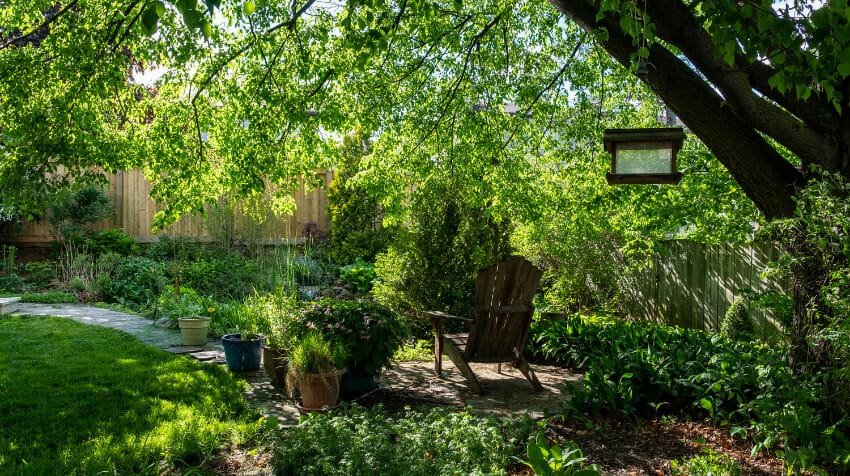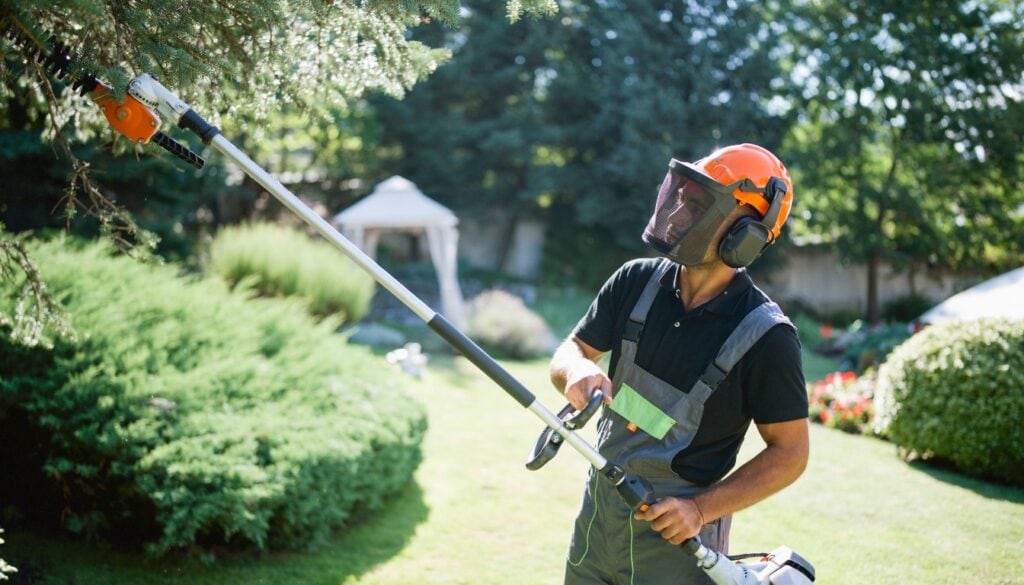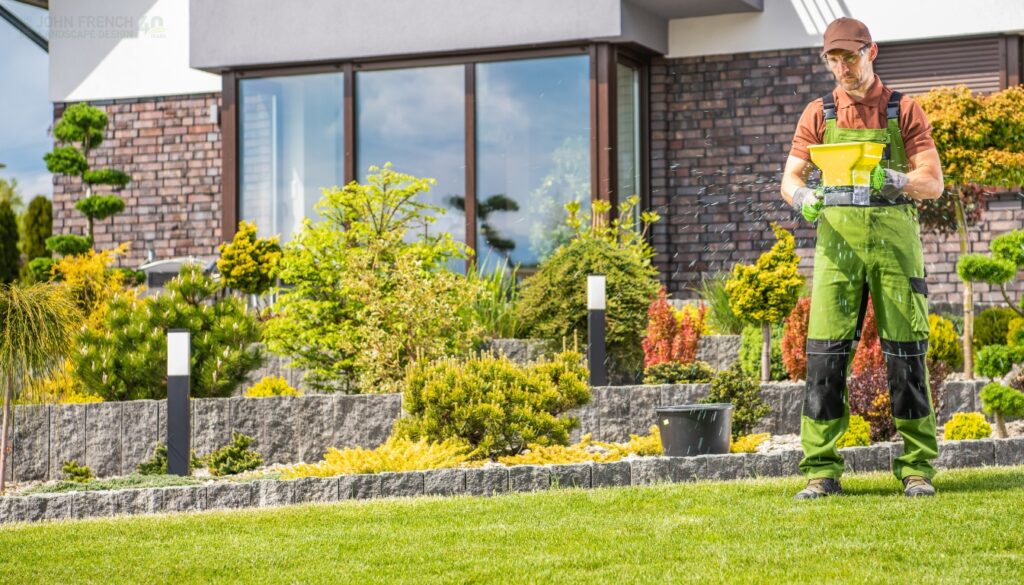Urban Landscaping: Unlock the Serenity and Natural Beauty of Concrete Jungles
Are you tired of the concrete jungle that surrounds you every day? Do you crave a natural escape from the hustle and bustle of city life? Look no further than an urban oasis.
An urban oasis is a breathtaking landscape design that transforms the harsh, man-made environment of cities into a peaceful sanctuary.
With the rise of urbanization, it’s becoming increasingly important to incorporate green spaces into our cities. Not only do they improve air quality and offer a place for relaxation, but they also enhance overall well-being.
In this article, we will explore the concept of urban oases and showcase stunning examples of their transformative power. You’ll learn how to create your own oasis in even the most limited spaces and discover what the future holds for this growing trend.
Get ready to be inspired by these awe-inspiring designs!
Understanding the Concept of Urban Oasis
If you want to create a rejuvenating green space in the middle of a bustling city, it’s important to understand the principles behind designing an urban oasis.
An urban oasis is a carefully planned and executed landscaping project that transforms concrete jungles into breathtaking natural spaces. The benefits of urban oases are numerous: they provide relaxation and stress relief, improve air quality, reduce noise pollution, and increase property values.
However, creating an urban oasis also comes with its challenges. Limited space, poor soil quality, and lack of water sources are just some of the obstacles that designers must overcome.
To tackle these challenges, designers use various techniques such as vertical gardening and rooftop gardens to maximize space utilization. They also incorporate sustainable practices like rainwater harvesting and composting to address water shortage issues while improving soil fertility.
By understanding the concept of an urban oasis and overcoming its challenges, you can create a stunning natural retreat in even the most crowded city centers. Now let’s explore different types of urban landscaping to help you design your very own green haven.
Types of Urban Landscaping
Discover the various styles of landscaping that can bring life and beauty to any city environment. One type is green infrastructure, which involves integrating natural elements like plants and trees into urban design. This not only enhances the aesthetic appeal but also provides environmental benefits such as reducing air pollution, managing stormwater runoff, and improving overall health and well-being.
Another style of urban landscaping is rooftop gardens. These are becoming increasingly popular in dense cities where space is limited. Rooftop gardens not only provide a peaceful retreat for residents but also contribute to energy efficiency by regulating temperature and reducing heat island effects.
With these types of landscaping options available, it’s no wonder that more cities are turning concrete jungles into beautiful urban oases. Moving forward, let’s take a look at some stunning examples of urban oasis designs that have transformed once-dull cityscapes into vibrant havens.
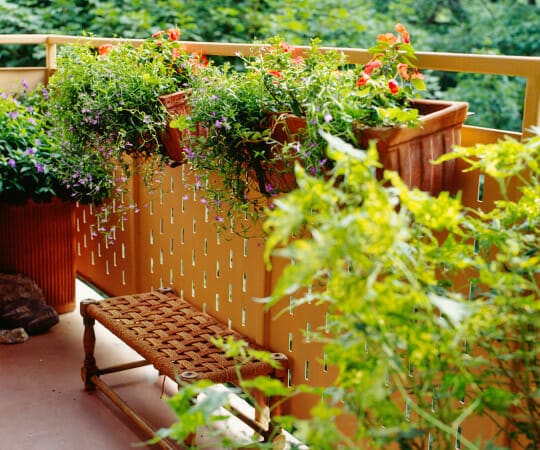
Examples of Stunning Urban Oasis Designs
You’re in for a treat as we discuss some of the most stunning and innovative urban oasis designs around the world.
First up is High Line Park in New York City, which transformed an abandoned railway into a beautiful park filled with greenery, art installations, and breathtaking views of the city.
Next on our list is Gardens by the Bay in Singapore, showcasing futuristic Supertrees and indoor gardens that create a truly immersive experience.
Finally, we have Bosco Verticale in Milan – twin towers covered in over 800 trees and thousands of plants that make it not just an architectural wonder but also a sustainable solution to urban living.
High Line Park, New York City
The High Line Park in NYC is a popular destination for tourists and locals alike. It’s an urban oasis that offers a serene escape from the hustle and bustle of city life.
Here are some reasons why you should visit:
- The park’s elevated design provides stunning views of the city skyline.
- The park is home to over 500 species of plants and flowers, creating a lush environment that changes with the seasons.
- You can enjoy rotating public art exhibits that add an element of creativity and surprise to your visit.
- The park hosts various events throughout the year, including movie nights and fitness classes, bringing together members of the community.
High Line Park is definitely worth checking out. And speaking of breathtaking urban landscaping, let’s take a trip across the Pacific Ocean to explore Gardens by the Bay in Singapore…
Gardens by the Bay, Singapore
Get ready to be transported to a futuristic wonderland as you explore Gardens by the Bay in Singapore. This urban oasis is a prime example of how cities can transform into green spaces that benefit both humans and the environment. Singapore has been dubbed a ‘green city’ due to its success in incorporating greenery into its infrastructure, making it one of the most beautiful and sustainable cities in the world.
Gardens by the Bay boasts over 250 acres of lush gardens, showcasing a variety of flora from around the globe. Beyond its stunning beauty, this project also serves an important purpose: improving air quality. With urbanization on the rise, many cities are facing issues with air pollution. However, with projects like Gardens by the Bay that incorporate extensive greenery into their design, we can combat these environmental challenges while simultaneously creating breathtaking landscapes for people to enjoy.
The benefits of urban gardening are clear – not only do they offer aesthetic value but also improve our overall well-being and health through cleaner air and stress reduction.
As you leave Gardens by the Bay behind, take note of how this project has transformed Singapore’s concrete jungle into an eco-friendly paradise for all to enjoy.
Next up on our journey towards understanding urban landscaping is Bosco Verticale in Milan – get ready to be amazed once again!
Bosco Verticale, Milan
As you leave behind the lush and vibrant Gardens by the Bay in Singapore, let’s take a trip to Milan where another stunning example of urban landscaping awaits. The Bosco Verticale, also known as Vertical Forest, is a pair of residential towers that boast an impressive display of green architecture.
This innovative project was designed to challenge the traditional notion of urban living. Instead of concrete walls and steel structures dominating the skyline, these towers are covered with over 20,000 trees and shrubs. The effect is not only visually striking but also provides numerous benefits such as improving air quality and reducing noise pollution.
And if you’re lucky enough to live in one of these buildings, imagine waking up every morning to a breathtaking view of vertical forests right outside your window!
To truly appreciate the magnitude of this undertaking, here are four facts about the Bosco Verticale that will blow your mind:
- The towers are home to more than 800 trees and 4,500 plants.
- They were designed by Italian architect Stefano Boeri and completed in 2014.
- The vegetation on both buildings covers an area equivalent to over ten thousand square meters.
- This greenery helps reduce energy consumption by providing natural insulation from heat and cold.
With projects like Bosco Verticale leading the way in urban landscaping, it’s clear that incorporating nature into our cities is not only feasible but also necessary for sustainable living.
But how can we create our own version of an urban oasis? Let’s explore some ideas that can help transform any concrete jungle into a green paradise without sacrificing style or convenience.
Creating Your Own Urban Oasis
Imagine escaping the hustle and bustle of city life by creating your own tranquil retreat filled with lush greenery and peaceful water features. With DIY inspiration and budget-friendly options, you can transform your concrete balcony or backyard into an urban oasis that rivals even the most luxurious resorts.
Start small by incorporating potted plants or hanging gardens, adding a water feature like a fountain or pond, and using natural materials like wood and stone to create a soothing atmosphere. You can also consider vertical gardening techniques to maximize space and create a stunning visual display.
With these simple steps, you’ll be able to enjoy your own personal hideaway in the heart of the city.
As more people seek refuge from urban chaos, the future of urban oasis is bright. From rooftop gardens to community parks, cities are embracing green spaces as an essential part of modern living. By taking inspiration from nature, we can create sustainable environments that benefit both our physical and mental well-being.
So why not take the first step towards building your own urban oasis today?
The Future of Urban Oasis
As you explore the future of urban oasis, it’s important to understand the role that urban landscaping plays in sustainable development. By designing green spaces and incorporating natural elements into cityscapes, we can create a more balanced ecosystem and reduce our carbon footprint.
Additionally, these green spaces have the potential to improve health and well-being in urban populations by providing a peaceful respite from the hustle and bustle of city life. However, there are also challenges ahead as we navigate issues such as limited space and resources, but with creative solutions and innovation, we have an opportunity to shape a brighter future for our cities.
Role of Urban Landscaping in Sustainable Development
The artful arrangement of natural elements in metropolitan environments can serve as a powerful catalyst for ecological and societal advancement. Incorporating green infrastructure into urban landscapes can reduce the adverse effects of urbanization on the environment, including air pollution, water pollution, and climate change.
Additionally, community engagement in creating these green spaces can foster a sense of ownership among residents, leading to improved social connections and overall well-being. To further enhance sustainability efforts through urban landscaping, it’s vital to consider two sub-lists:
- The first involves incorporating indigenous plants that are adapted to local conditions. This not only reduces maintenance costs but also supports biodiversity by providing habitats for native animals.
- The second involves designing landscapes that capture and treat rainwater runoff. These features help prevent flooding while recharging groundwater resources.
By implementing these strategies, urban landscapes can become more sustainable while simultaneously addressing societal issues such as health and well-being. Urban oases have the potential to improve mental health by providing calming environments for relaxation or exercise.
In the next section, we’ll explore this potential further with a focus on how urban landscaping can improve health outcomes in urban populations without sacrificing aesthetics or functionality.
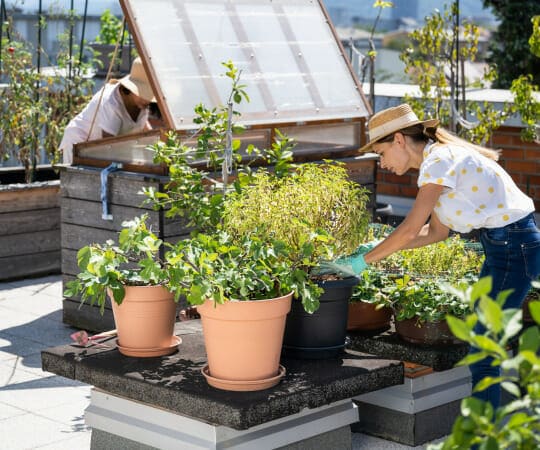
Potential for Improving Health and Well-being in Urban Populations
Enhancing the well-being and health of city dwellers through promoting green infrastructure is a crucial step towards building sustainable and livable communities.
Urban landscaping has the potential to transform concrete jungles into breathtaking oases, providing a variety of benefits for both individuals and communities as a whole.
Studies have shown that exposure to green spaces can reduce stress, improve mental health, lower blood pressure, and even boost immune system function.
Moreover, incorporating green infrastructure into urban design requires community engagement, which fosters a sense of ownership and pride in one’s neighborhood.
By involving residents in the planning process, local governments can build relationships with their constituents while also creating more equitable access to green spaces.
The benefits of promoting green infrastructure are clear; however, challenges and opportunities lie ahead for those seeking to incorporate these principles into their cities’ landscapes.
Challenges and Opportunities Ahead
Now that you understand how urban landscaping can improve the health and well-being of urban populations, it’s important to acknowledge the challenges and opportunities that come with implementing these changes.
Urban planning plays a crucial role in creating spaces that are not only aesthetically pleasing but also functional for the community.
Community involvement is also essential in ensuring that any changes made reflect their needs and preferences.
However, there may be resistance from some members who prefer the existing landscape or fear gentrification.
Additionally, funding can be an issue as it requires a significant investment to transform concrete jungles into green havens.
Nonetheless, with careful planning and collaboration between communities and city officials, urban landscaping has the potential to create beautiful oases within our cities that benefit both people and nature.
Frequently Asked Questions
How much does it cost to create an urban oasis?
If you’re looking to create your own urban oasis, one of the most important things to consider is cost estimation and budget planning.
Depending on the size and complexity of the project, creating an urban oasis can be quite expensive. Factors that can affect the cost include materials, labor, permits, and ongoing maintenance costs.
It’s important to do your research and get multiple quotes from reputable contractors before starting any work. Additionally, budget planning is crucial in ensuring that you don’t overspend or run out of funds during the project.
By carefully considering these factors and planning ahead, you can create a stunning urban oasis without breaking the bank.
Are there any regulations or permits required for creating an urban oasis?
If you’re thinking about creating an urban oasis, there are a few things to keep in mind when it comes to regulations and permits. Depending on where you live, there may be permit requirements that need to be met before you can begin your project.
You’ll also want to make sure that you’re not violating any zoning restrictions. It’s important to do your research and consult with local officials before getting started. While it may seem like a hassle, taking the time to navigate the legalities of creating an urban oasis will ensure that your project is safe, sustainable, and successful in the long run.
What are some common challenges faced when creating urban oasis in densely populated areas?
Creating an urban oasis in densely populated areas can be a challenging task. Green space management is crucial, as the limited space available must be utilized efficiently. Additionally, community engagement is necessary to ensure that the green spaces are maintained and utilized properly.
Some common challenges include finding suitable locations for the oasis, dealing with limited resources and funding, and navigating through various regulations and permits required by local authorities. However, with creativity and knowledge of sustainable practices, these challenges can be overcome to create an inviting landscape for all to enjoy.
As they say, “when life gives you concrete jungles, make them into lush gardens.”
Can urban oasis designs be customized to suit individual preferences and needs?
Customization options are plentiful when it comes to designing your very own urban oasis. You can personalize your design to fit your individual preferences and needs, ensuring that you feel right at home in the midst of a bustling cityscape.
There are endless possibilities for creating an outdoor haven that reflects your personality and style. You can select the perfect plants and flowers, incorporate unique water features or seating arrangements, and more.
Whether you crave a serene retreat or an energetic social space, working with a knowledgeable landscape designer can help bring your vision to life. They can transform any concrete jungle into an enchanting urban paradise.
How can an urban oasis contribute to the sustainability and well-being of a city’s residents?
Green infrastructure and community engagement are two crucial elements that contribute to the sustainability and well-being of a city’s residents. By investing in green infrastructure, such as parks, gardens, and trees, cities can reduce air pollution, mitigate the urban heat island effect, and increase access to nature for residents.
Additionally, community engagement is essential in creating a sense of ownership and pride among residents towards these green spaces. When individuals have a stake in their local environment, they’re more likely to take care of it and advocate for its protection.
Therefore, by incorporating both green infrastructure and community engagement into urban planning initiatives, cities can create sustainable environments that promote the health and well-being of their residents.
Conclusion
Congratulations! You now have all the information you need to create a breathtaking urban oasis in your concrete jungle.
From understanding the concept of an urban oasis to exploring various types of urban landscaping, and from studying stunning examples to creating your own unique design, you’re ready to transform your surroundings into a green haven.
But did you know that creating an urban oasis not only beautifies your environment but also has positive effects on mental health? According to a study by the University of Exeter, spending just 30 minutes in nature can significantly reduce stress levels.
Imagine what daily exposure to an urban oasis could do for your overall well-being. So go ahead and get creative with plants, water features, and seating areas, and watch as your personal paradise takes shape before your eyes.
Happy designing!
Related Sources:
Urban Gardening: The Stunning Transformation of a Concrete Jungle into a 100% Green Paradise

